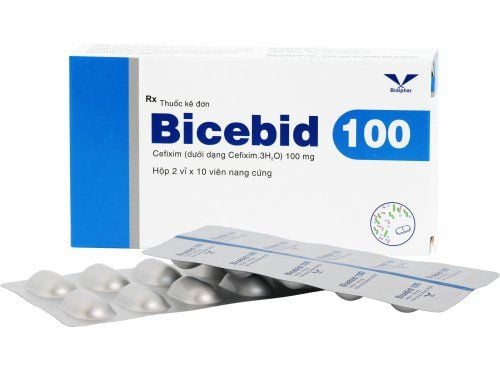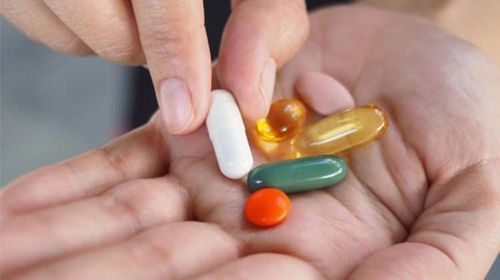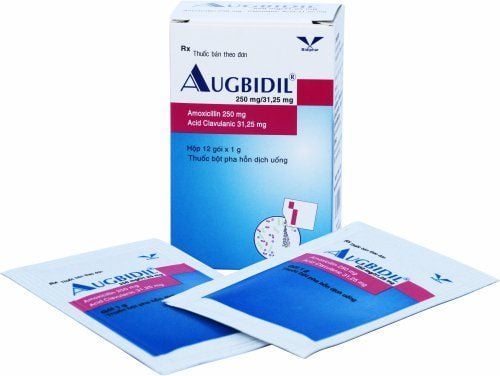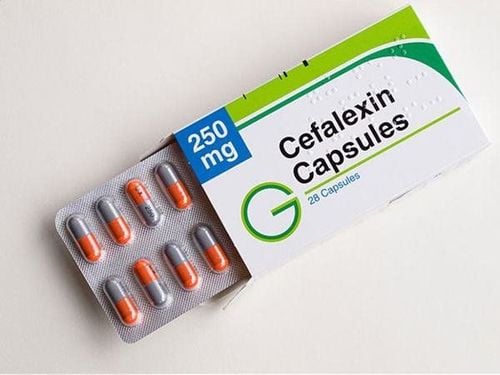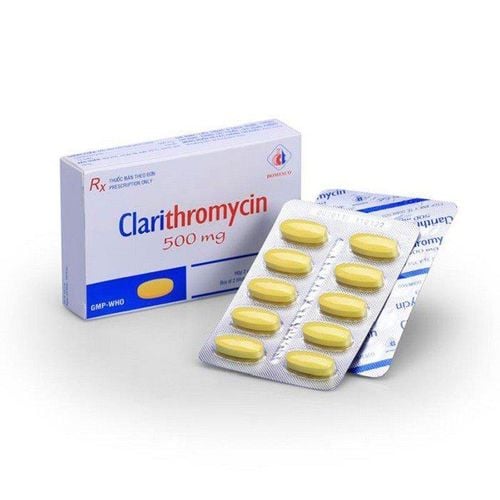This is an automatically translated article.
Cefradine is a semi-synthetic cephalosporin antibiotic. The drug has a bactericidal effect by inhibiting the synthesis of the bacterial cell wall. What are the uses, doses and precautions when using Cefradine?
1. What is Cefradine?
Cefradine medicine 1g contains the main active ingredient is Cefradine with a concentration of 1g. Cefradine is a semi-synthetic cephalosporin antibiotic. Based on the spectrum of activity, Cefradin is classified as a 1st generation cephalosporin. The drug has a bactericidal effect by inhibiting the synthesis of the bacterial cell wall. First-generation cephalosporins are generally active in vitro against many Gram-positive cocci, including penicillinase-secreting or non-penicillinase-secreting Staphylococcus aureus, group A beta-hemolytic Streptococcus, and Streptococcus pneumoniae. First generation cephalosporins have limited activity against Gram-negative bacteria.
2. Indications for Cefradine
Cefradine is indicated in the treatment of skin and skin structure infections, respiratory infections. Urinary tract infections including: prostatitis and many other serious infections, prevention of infection during surgery. Cefradine is contraindicated in cases of allergy or hypersensitivity to any of its ingredients.
3. Dosage and usage of Cefradine
Adults: Deep intramuscular or slow intravenous injection or intravenous infusion at a dose of 500mg - 1g every 6 hours. Premature infants and infants up to 1 year of age: The dose of Cefradine has not been determined in these subjects. Therefore, it is advisable to consult a medical professional. Children 1 year and older: Intramuscular or intravenous injection at a dose of 12.5 - 25 mg/kg, every 6 hours. Prophylaxis of surgery: For those who have a caesarean section, 1g intravenously. For other types of surgery, 1g intramuscularly or intravenously, 30 minutes to 1 hour before surgery and repeat 4 to 6 hours later if needed. However, Cefradine should not be used more than 8g/day. Patients with renal impairment: The dose must be reduced in patients with renal impairment. Manufacturer recommends an initial loading dose of 750mg, followed by maintenance doses of 500mg
4. Cefradine side effects
Patients using Cefradine may experience the following side effects:
Common:
Body as a whole: Fever, anaphylaxis, serum sickness-like reactions. Skin: Skin rash, urticaria, rash. Blood: Eosinophilia, agranulocytosis, bleeding complications Gastrointestinal: Nausea, vomiting, diarrhea, pseudomembranous colitis. Uncommon
Kidney: Acute tubular necrosis if the dose is too high and usually occurs in the elderly or people with a history of renal failure, acute interstitial nephritis. Rare
Liver: Hepatitis, cholestatic jaundice. Systemic: There may be pain at the site of intramuscular injection and thrombophlebitis after intravenous infusion at doses above 6g/day for more than 3 days.
5. Notes when using Cefradine
To ensure safety when using Cefradine, patients should note the following points:
Before starting Cefradine, the patient's history of allergy to cephalosporins, penicillins or other drugs must be carefully investigated. . Approximately 10% of penicillin-sensitive patients may also be cross-allergic to other cephalosporins, so caution should be exercised when administering Cefradin to such patients. Cefradine should be used with caution in patients with renal impairment and may require a dose reduction. Renal function should be monitored during treatment, especially when taking the drug for a long time and in high doses. Prolonged use of antibiotics can lead to overgrowth of resistant bacteria. Long-term use of antibiotics can cause diarrhea, which can also be a sign of a new infection. If the patient has diarrhea (especially bloody diarrhea), contact the doctor for advice. Pregnancy: Cefradine crosses the placenta very quickly. Cephalosporin antibiotics are generally considered safe during pregnancy. Lactation: Cefradine is excreted in breast milk in low concentrations. The drug can cause some side effects in nursing infants, which are changes in the intestinal microflora, direct effects on children and affect the results of bacterial cultures when microbiological testing is required. However, Cefradin, like other cephalosporin antibiotics, is classified as safe for use while breastfeeding.
6. Cefradine drug interactions
Concomitant use of Cefradine with some other drugs may increase / decrease the effectiveness of treatment or increase the side effects of the drug. Here are some interactions and incompatibilities to note when using Cefradine:
Concomitant use of Cefradine with Probenecid will competitively inhibit renal tubular secretion, increasing the drug's serum concentration. Mix Cefradin injection with other antibiotics. Mixing Cefradin with Aminoglycosides will inactivate both types. If it is necessary to use both drugs at the same time for treatment, they must be injected at two different sites. It is best that the patient informs the medical staff of all prescription and non-prescription drugs, dietary supplements, vitamins that are being used for advice.
The article has provided about uses, doses and notes when using Cefradine. If you need any more information about the drug, the patient should consult a medical staff for in-depth advice.
Please dial HOTLINE for more information or register for an appointment HERE. Download MyVinmec app to make appointments faster and to manage your bookings easily.




